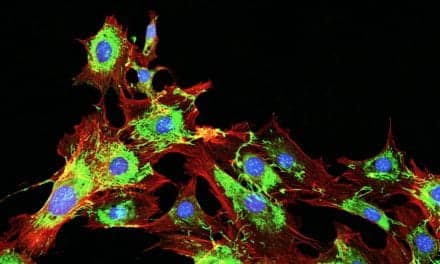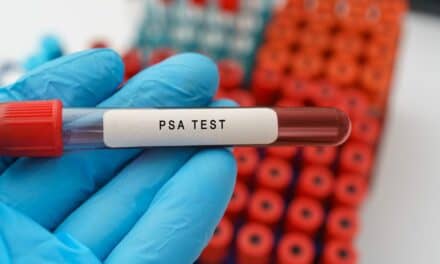More than two years after the COVID-19 pandemic began, cancer diagnoses particularly diagnoses of breast and prostate cancer, two of the nation’s leading causes of cancer death, continue to lag behind pre-pandemic levels, according to a nationally representative Quest Diagnostics Health Trends study by Quest Diagnostics, a provider of diagnostic information services.
Published today in the Journal of Clinical Oncology (JCO) Clinical Cancer Informatics, an American Society of Clinical Oncology (ASCO) journal, the study “New Cancer Diagnoses Still Lagging in United States in Second Full Year of COVID-19 Pandemic” analyzed rates of diagnoses of eight common types of cancer (prostate, breast, colorectal, lung, pancreatic, cervical, gastric and esophageal) of patients across the United States. Based on 1,144,879 deidentified results of diagnostic tests by Quest Diagnostics between January 2018 and March 2022, the study is believed to be the largest to evaluate the association of the pandemic on cancer diagnoses, based on objective laboratory data, in the United States.
The analysis found that cancer diagnoses plummeted by close to 30% in the first few months of the pandemic in 2020, when much of society and healthcare shut down. While cancer diagnoses increased over the subsequent two years, the gains have not been enough to offset diagnoses delayed or missed earlier in the pandemic.
The findings suggest more people are living with undiagnosed cancers now than prior to the pandemic. A delayed cancer diagnosis can lead to more advanced disease, more aggressive and costly treatment, and worse outcomes.
The study follows unaffiliated research by the American Association for Cancer Research (AACR) showing the death rate from cancer declined by 32% between 1991 and 2019, the year before the pandemic began, with gains “attributed mainly to the unprecedented progress against lung, colorectal, breast, and prostate canceri.”
“The decline in the cancer death rate over the past three decades is a major healthcare achievement. And yet, our more recent analysis shows the pandemic, by delaying cancer diagnoses, is putting these gains at risk,” says co-author Harvey W. Kaufman, MD, senior medical director and head of the Health Trends Research Program for Quest Diagnostics.
The latest Quest Diagnostics analysis builds on two studies published by the company’s medical team in JAMA Open Network in 2020 and 2021.
Among the key findings:
- From March through May 2020, the monthly number of new diagnoses fell 30% for the 8 cancer types: breast, colorectal, lung, pancreatic, cervical, gastric, esophageal, and prostate. Declines were significant for all cancer types.
- From June 2020 through March 2021, the number of diagnoses declined 15% compared to pre-pandemic levels.
- From April 2021 to March 2022 (period 3), the number of diagnoses declined 11% compared to pre-pandemic levels.
- Diagnoses of prostate and breast cancer remained significantly below pre-pandemic levels as late as period 3, at 17% and 11% respectively.
“While restrictions to travel and healthcare services lifted by summer 2020, our analysis reveals that the pandemic’s adverse influence on utilization of preventative care and cancer screenings continues this year,” says co-author Yuri Fesko, MD, vice president, Medical Affairs, Quest Diagnostics. “As an oncologist, I am particularly disturbed by the finding that cancer diagnoses for breast and prostate cancer are well below pre-pandemic levels. We hope this study encourages people to resume regular preventive care and to move without delay to visit their physician if they suspect a health problem. Doing so may literally save your life.”
The Quest Diagnostics analysis has implications for hospitals and health systems, which are experiencing an increase in mastectomies (for breast cancer) and longer hospital stays for patients with prostate cancer along with other conditions that could have been caught in routine screenings.ii
“Hospitals and health systems are struggling to keep up with sicker patients requiring greater care, a trend that our analysis suggests may worsen, at least for some cancers,” says Fesko.
The study’s strengths include large size, national representation and use of objective laboratory data, while limitations include lack of racial and ethnic data.
More than 600,000 people are expected to die of cancer 2022. Breast and prostate cancer are expected to account for nearly 30% of new cancer diagnoses in 2022.iii
References
[i] CancerProgressReport.org. Philadelphia: American Association for Cancer Research. Accessed September 23, 2022.
[ii] Fitch Ratings. 2022 Mid-Year Outlook: U.S. Not for Profit Hospitals and Health Systems. https://www.fitchratings.com/research/us-public-finance/fitch-ratings-2022-mid-year-outlook-us-not-for-profit-hospitals-health-systems-16-08-2022. Accessed September 23, 2022.
[iii] National Institutes of Cancer. Cancer Stat Facts: Common Cancer Sites. https://seer.cancer.gov/statfacts/html/common.html#:~:text=How%20Many%20People%20Die%20of,cancer%20in%20the%20United%20States. Accessed September 23, 2022





